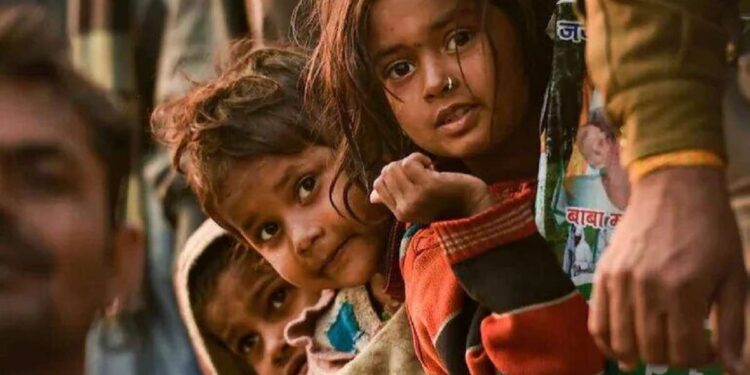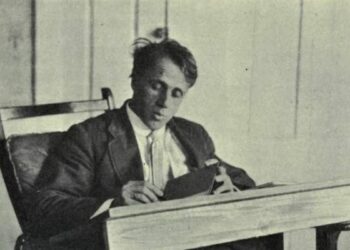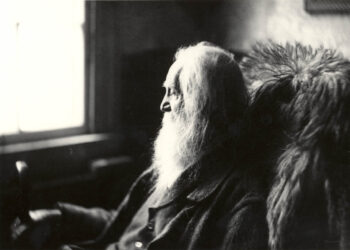The Children of the Poor Poem Summary
- “People who have no children can be hard:” The poet starts off by saying that people who don’t have kids can be cruel or heartless.
- “Attain a mail of ice and insolence:” The metaphor of a “mail of ice” highlights the emotional distance of those without children by implying a callous and emotionless manner of living.
- “Need not pause in the fire, and in no sense,” The poet implies that the intensity of the figurative fire, which stands for the difficulties and hardships endured by families, especially those who are poor, is not felt by people who are childless.
- “Hesitate in the hurricane, and when the walls” The comparison to a hurricane underscores the tumultuous and difficult circumstances faced by families living in poverty. The walls could represent the barriers or challenges they confront.
- “Fall, and stand with steady senses closed” The idea that those without children can remain steady and unaffected in the face of adversity contrasts with the vulnerable position of families, particularly children, dealing with poverty.
- “O should the brim of time, where the sweet blood ran” The “brim of time” is a metaphor for the edge or limit of existence. The mention of “sweet blood” suggests the vitality and potential that is lost or diminished in the lives of the poor.
- “Swell with a savor that corrupts the whole:” The poet suggests that the difficult circumstances and challenges experienced by the poor can corrupt the essence of life, creating a pervasive impact.
- “O should they lick the needles, they will carry” The image of licking needles could symbolize the bitter and painful experiences of poverty. The idea of carrying these experiences implies a lasting and burdensome impact.
- “The sinful in the punished, for this world” The poet suggests a connection between sin, punishment, and poverty, highlighting societal judgments and the cyclical nature of hardship.
- “Scorches and makes hard, and the hurt child,” The harsh realities of poverty are emphasized through the imagery of scorching and hardening, and the focus shifts to the vulnerable children who bear the brunt of these conditions.
- “The dying father, and the mother proud,” The mention of a dying father and a proud mother suggests the challenges faced by parents in poverty. The pride may stem from resilience or determination despite adverse circumstances.
- “The lusty children with the careful five” The children, described as “lusty,” may highlight their vitality and resilience despite their challenging environment. The reference to “careful five” could suggest a close-knit family unit.
- “In the hungry street shall glut their holes” The “hungry street” symbolizes the poverty-stricken environment, and “glutting their holes” implies trying to fill the voids or needs created by hunger and want.
- “With not-nurturing hands, and with a plague” The hands described as “not-nurturing” suggest a lack of care or support, and the mention of a plague implies the detrimental effects of poverty on the health and well-being of the family.
- “Of strange disease. So shall the dying stand” The poet foresees a bleak future for those in poverty, where illness and death become inevitable outcomes due to the challenging conditions they face.
- “Incurious in the trembling of a hand,” The term “incurious” suggests a lack of interest or concern, possibly reflecting society’s indifference to the struggles of the poor. The trembling hand could represent the fragility and vulnerability of life.
- “Before the chasm, in the stranded boat,” The chasm represents a gap or divide in society, and the stranded boat may symbolize the isolation and helplessness of those trapped in poverty.
- “Of the thunderous tide. Then shall the tongue” The thunderous tide signifies a force that overwhelms, and the tongue may represent the inability to articulate or express the dire circumstances faced by the poor.
- “In terror cease. Then, were there tongues more” The cessation of tongues in terror suggests a stifling of voices and an inability to communicate the extent of the suffering experienced by those in poverty.
- “Than the world can wag, we should be dumb;” If there were more voices than the world could handle, the poet suggests that they would be silenced, emphasizing the overwhelming and suffocating nature of poverty.
- “Then should the worms of earth for the sweet gone” The worms of earth symbolize decay and mortality. The reference to the “sweet gone” suggests the loss of something precious or valuable.
- “Embalm the dead and sprinkle dry the bone.” The image of embalming the dead and drying the bone conveys a sense of finality and the harsh reality of death in impoverished conditions.
- “O teach of us with wisdom, and with feeling,” The poet appeals for understanding and empathy, suggesting that society needs to be taught about the realities faced by the poor with both wisdom and compassion.
- “O let them not destroy us with their jingling,” The “jingling” may refer to the distractions or superficial aspects of society that divert attention from the plight of the poor. The poet pleads for the preservation of the impoverished rather than their destruction.
- “O let them not forget us if we bring” The plea continues, asking not to be forgotten even if the impoverished bring attention to their struggles, highlighting the fear of being overlooked or ignored.
- “A sacrifice of sound. For the sound is loud.” The sacrifice of sound may refer to the voices or expressions of the poor. The assertion that “the sound is loud” suggests that their cries and struggles should not be ignored or dismissed.
- “O blast, and blight, and blow the horn all day!” The poet seems to welcome a forceful awakening or revelation (“blast, and blight, and blow the horn”), advocating for the exposure of the harsh realities faced by the poor.
- “For where are we, and where, ah where, are they,” The question of “where are we” implies a search for identity and recognition, and “where, ah where, are they” underscores the unknown or marginalized status of the impoverished.
- “The people of the poor world, the poor that are” The repetition of the word “poor” emphasizes the focus on the impoverished, specifically those who make up the “poor world.”
- “No longer. O no longer.” The repeated phrase “No longer” serves as a powerful refrain, signaling a plea for an end to the suffering and neglect faced by the poor.
- “The sweet gone. The dear gone. The gone gone.” The repetition of “gone” creates a rhythmic and emotional impact, underscoring the irrevocable losses experienced by the poor — the loss of sweetness, endearment, and the gone, perhaps representing the departure of loved ones or the vanishing of hope.
- “The heavily-sentenced, by the darker stars,” The phrase “heavily-sentenced” implies a life burdened with hardship and challenges. “Darker stars” suggests a celestial alignment that is unfavorable or ominous, symbolizing the difficult fate of the impoverished.
- “The torn bodies, the shrieking mouths, the stars” The poet vividly depicts the physical and emotional agony of the poor, using imagery of torn bodies and shrieking mouths. The juxtaposition with the stars may suggest the vastness of suffering and the cosmic indifference to their plight.
- “That shall be reason and witness and the prayer.” The stars, often associated with fate and destiny, are presented as both witnesses and a source of hope or prayer for the impoverished. Despite the harsh realities, they stand as a testament to the struggles of the poor.
- “The stone shall answer to the failing cry,” The stone is personified as an entity capable of responding to the desperate cries of the poor. This could symbolize the need for acknowledgment or a plea for compassion from the seemingly indifferent elements of society.
- “O teach of us with wisdom, and with feeling,” The repetition of this line reinforces the poet’s plea for understanding and empathy, emphasizing the importance of societal awareness and compassion toward the poor.
- “O let them not destroy us with their jingling,” Reiterated from earlier in the poem, this line again emphasizes the poet’s concern about distractions or superficialities that might divert attention from the genuine struggles of the impoverished.
- “O let them not forget us if we bring” Similarly, the repetition underscores the fear of being overlooked or dismissed, even if the poor attempt to draw attention to their plight through their voices or sacrifices.
- “A sacrifice of sound. For the sound is loud.” Repeated from an earlier stanza, this line continues to assert the significance of the voices of the poor, emphasizing that their sounds and cries are loud and should not be ignored.
- “O blast, and blight, and blow the horn all day!” Repeated once more, this line serves as a rallying cry for exposure and acknowledgment, urging a forceful revelation of the challenges faced by the poor.
- “For where are we, and where, ah where, are they,” Repeated for emphasis, this question resurfaces, underlining the existential query about the identity and whereabouts of the impoverished in a society that often overlooks their struggles.
- “The people of the poor world, the poor that are” Repeated, this line reiterates the focus on the people of the poor world, emphasizing their existence and the acknowledgment of their collective identity.
- “No longer. O no longer.” The powerful refrain is repeated once more, driving home the urgency for change, an end to suffering, and a plea for societal recognition and compassion toward the poor.
Also Read-
- A Way to Love God Poem Summary line by line
- For The Union Dead Poem Summary line by line
- Anecdote of The Jar Poem Summary line by line
The Children of the Poor
Conclusion
“The Children of the Poor” by Gwendolyn Brooks is a poignant and impactful exploration of the hardships faced by impoverished families. Through vivid imagery, emotional language, and repetitive refrains, Brooks draws attention to the struggles of the poor, emphasizing the need for societal understanding and compassion. The poem serves as a powerful call for awareness and action to address the systemic issues contributing to poverty and to recognize the humanity and dignity of those living in challenging circumstances.
FAQ:
1. Who is Gwendolyn Brooks?
Gwendolyn Brooks (1917–2000) was an American poet, author, and teacher. She was the first African American to win the Pulitzer Prize for Poetry in 1950. Her works often addressed the complexities of race, class, and social issues.
2. What is the central theme of “The Children of the Poor”?
The central theme of the poem is the harsh reality of poverty and its impact on the lives of children and families. It explores the emotional and physical struggles of those living in impoverished conditions and calls for empathy and awareness from society.
3. What literary devices are used in the poem?
The poem employs various literary devices, including metaphor (“the mail of ice,” “the hungry street”), personification (“the stone shall answer”), repetition of phrases for emphasis, and vivid imagery to convey the emotional and physical struggles of the poor.
4. Why does the poet repeat certain lines in the poem?
Repetition is a powerful rhetorical device used by the poet to emphasize key themes and sentiments. The repetition of phrases like “O teach of us with wisdom, and with feeling” and “No longer. O no longer” serves to drive home the urgency of the poet’s message and to create a rhythmic and emotional impact.

















